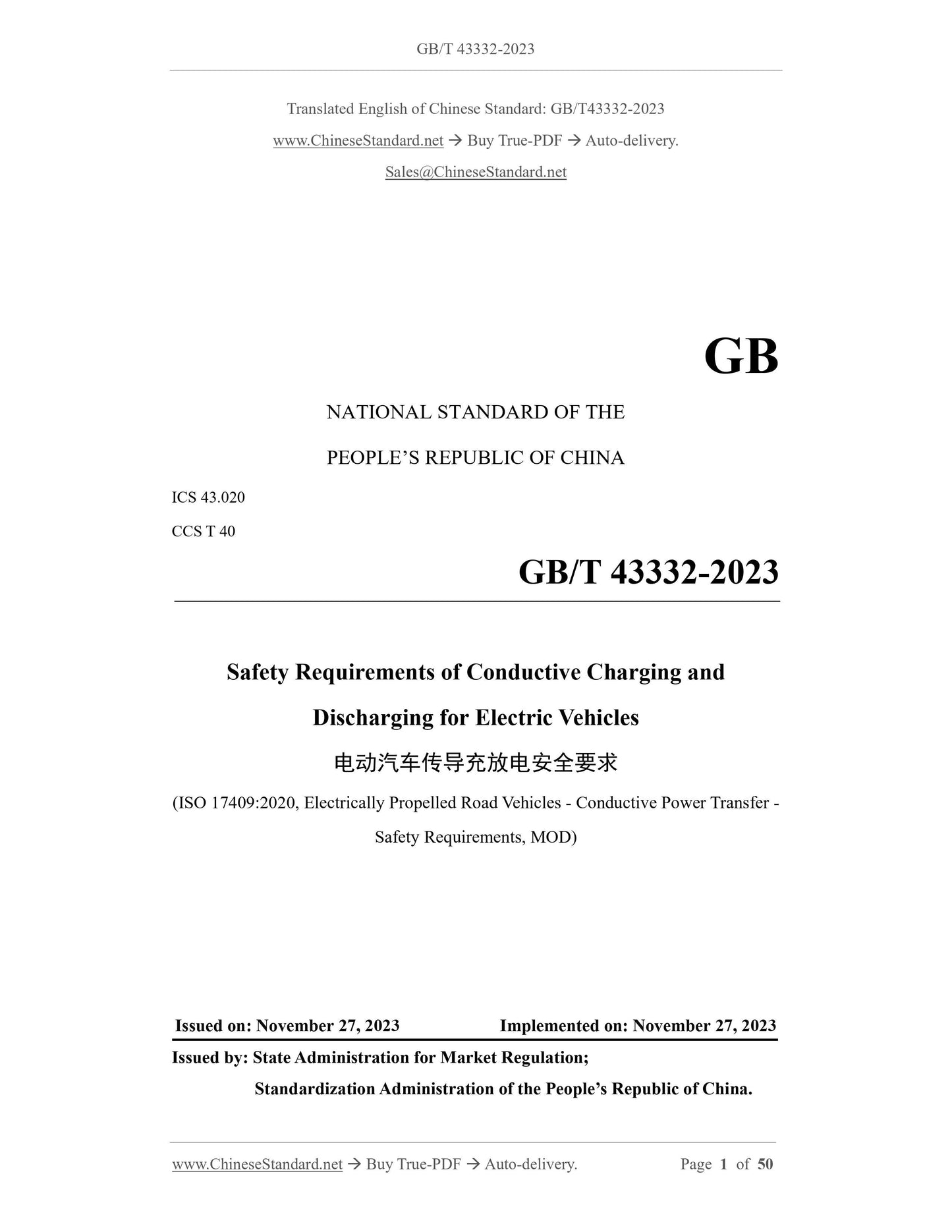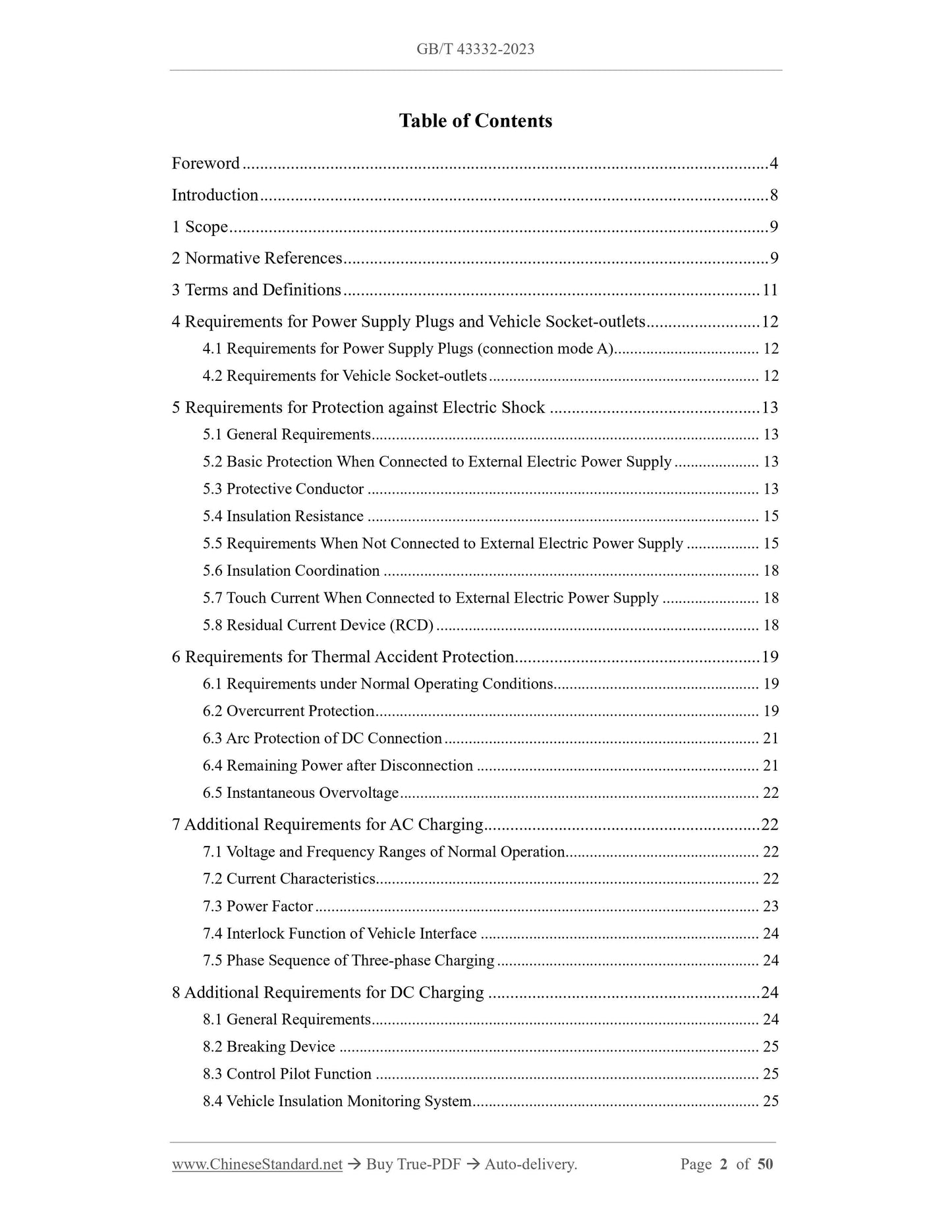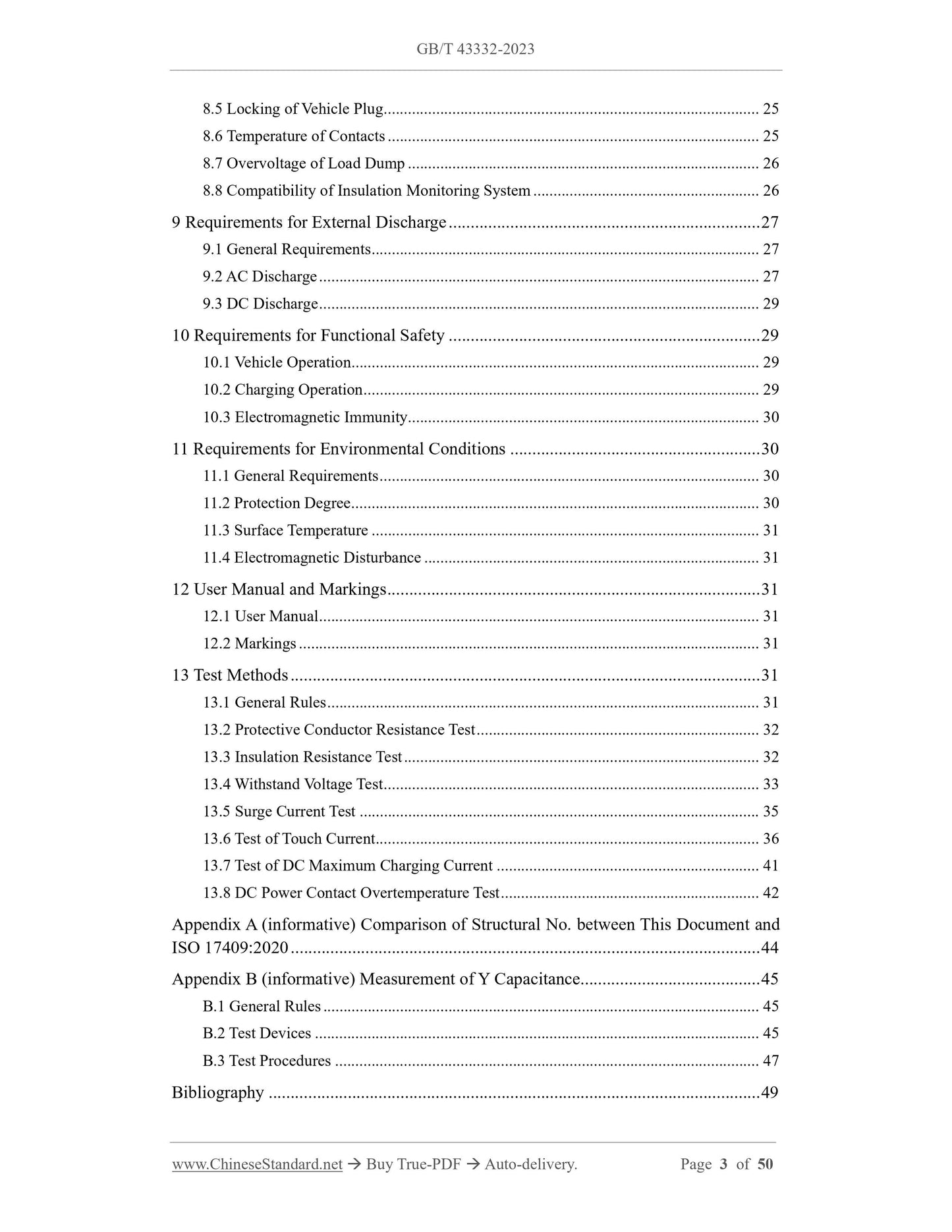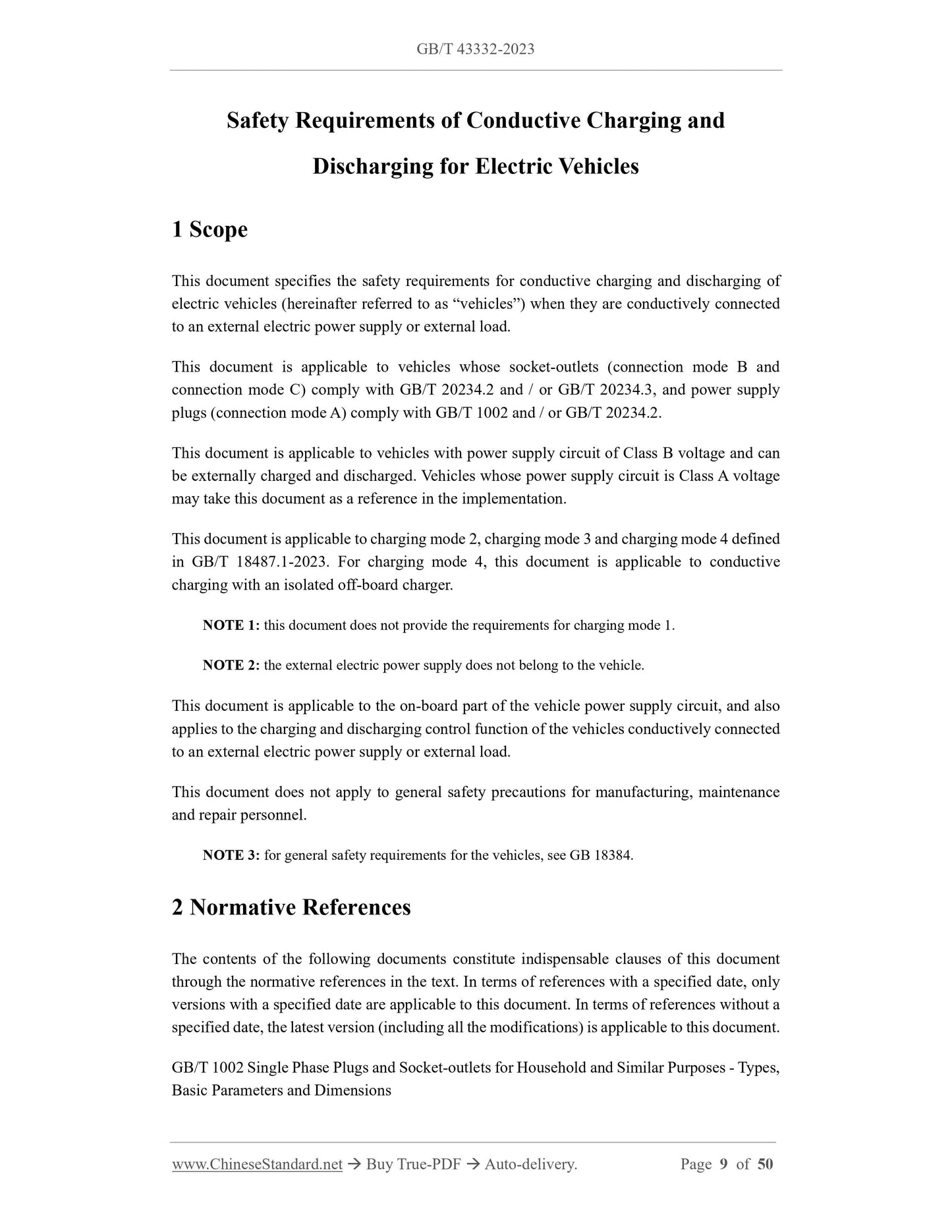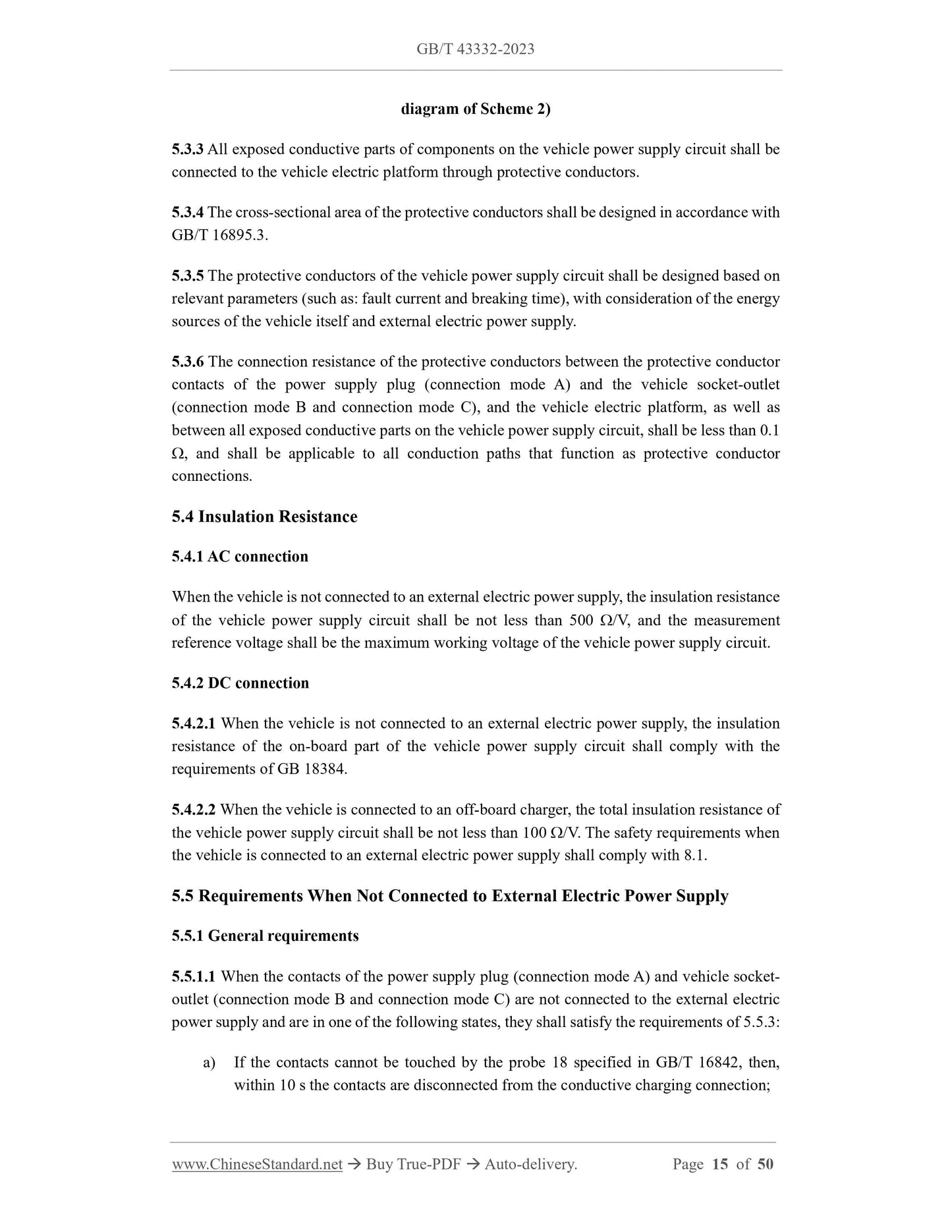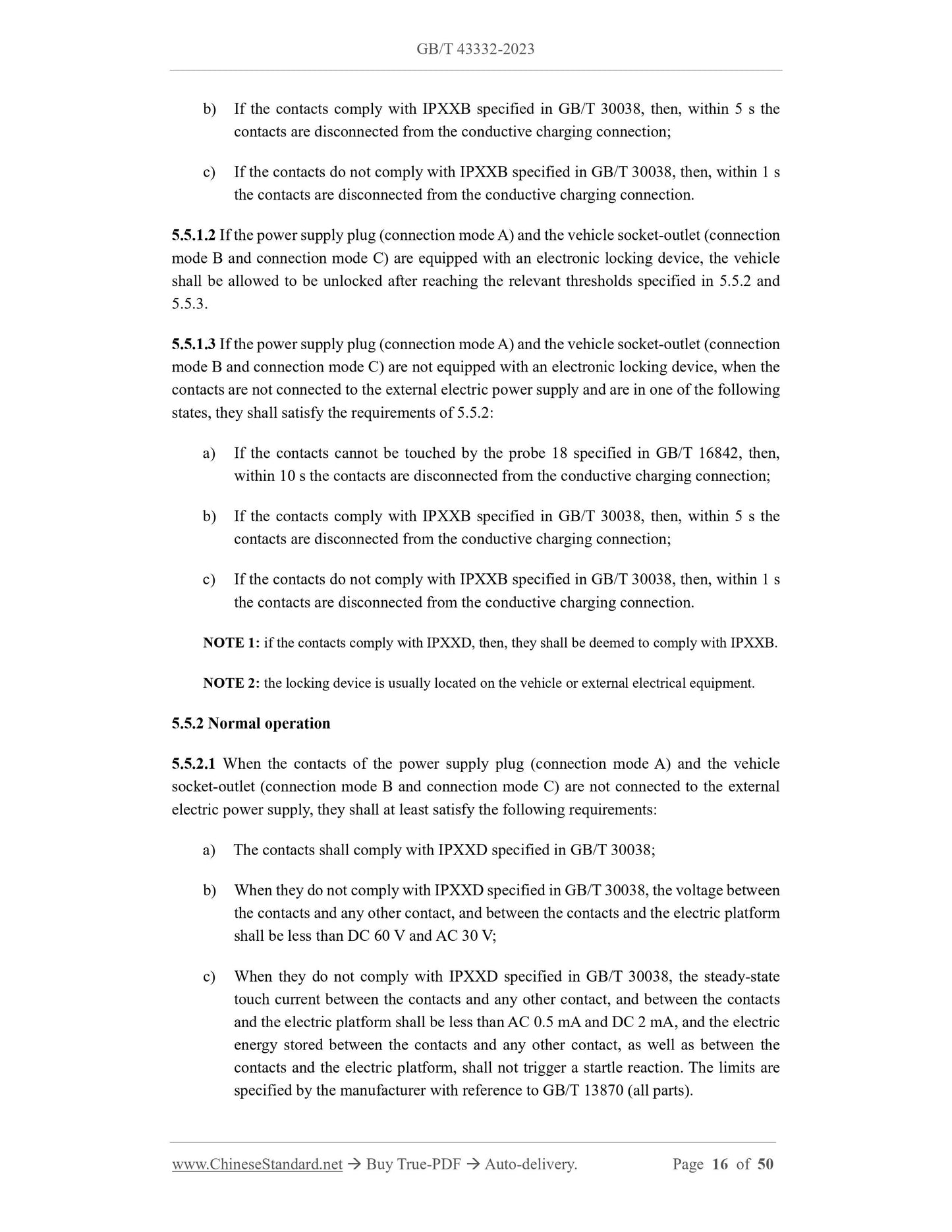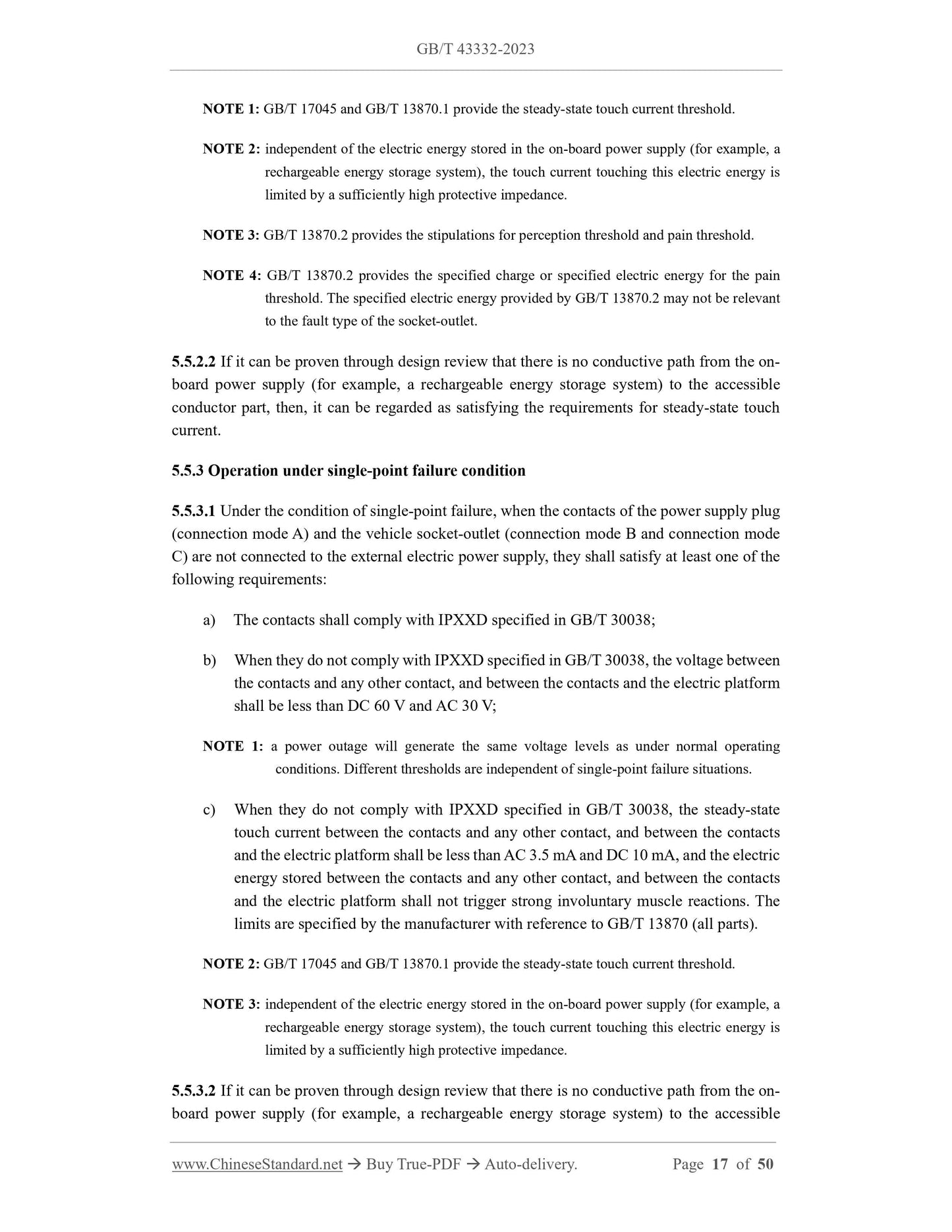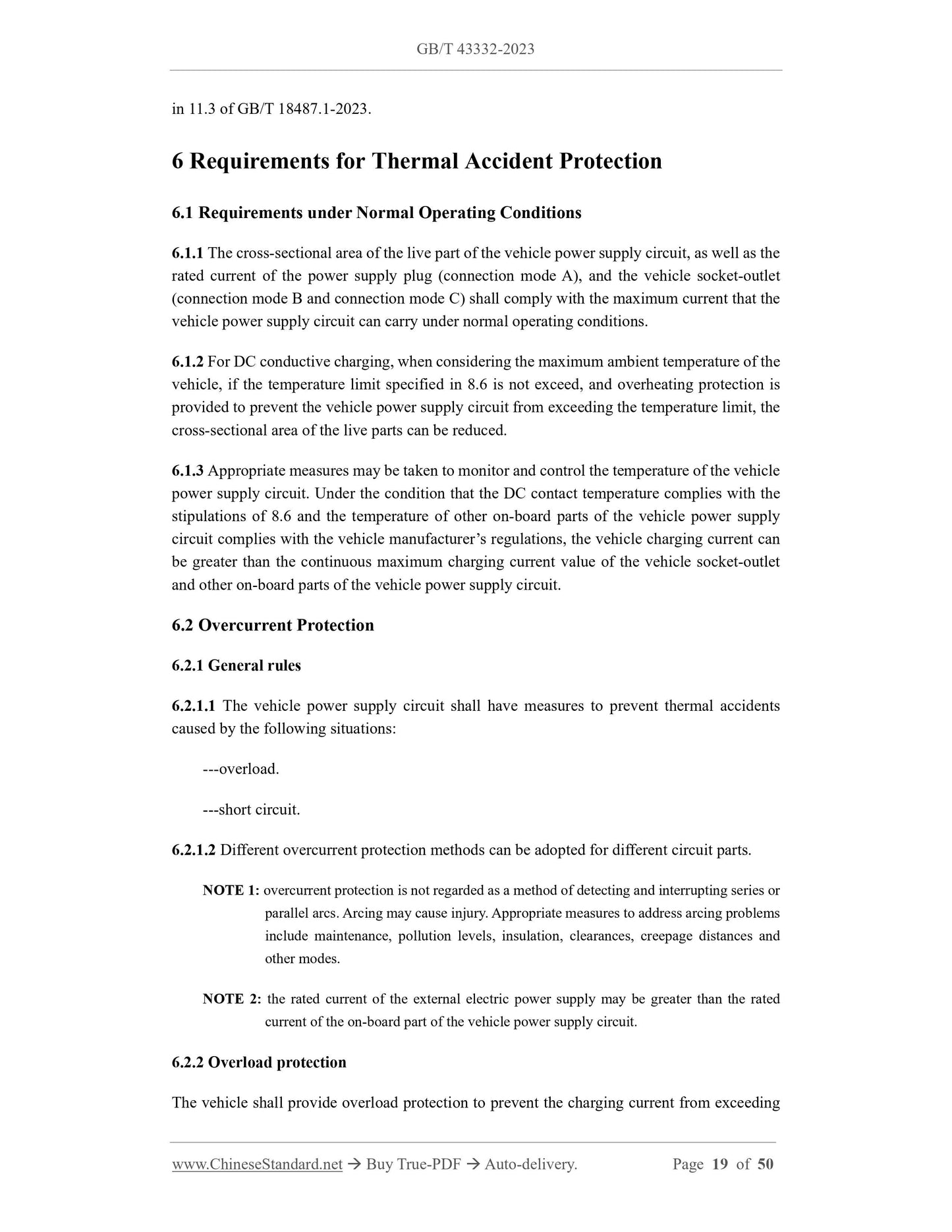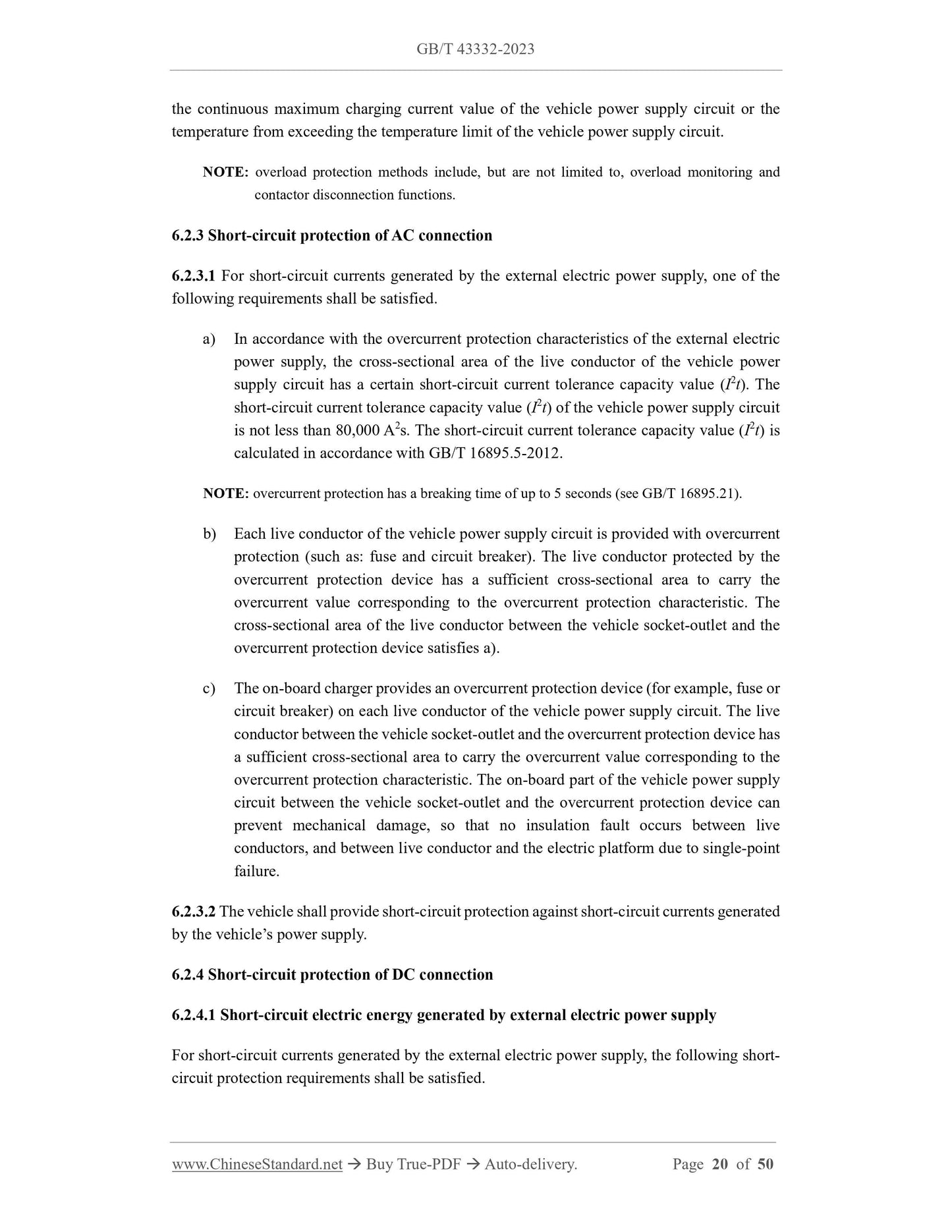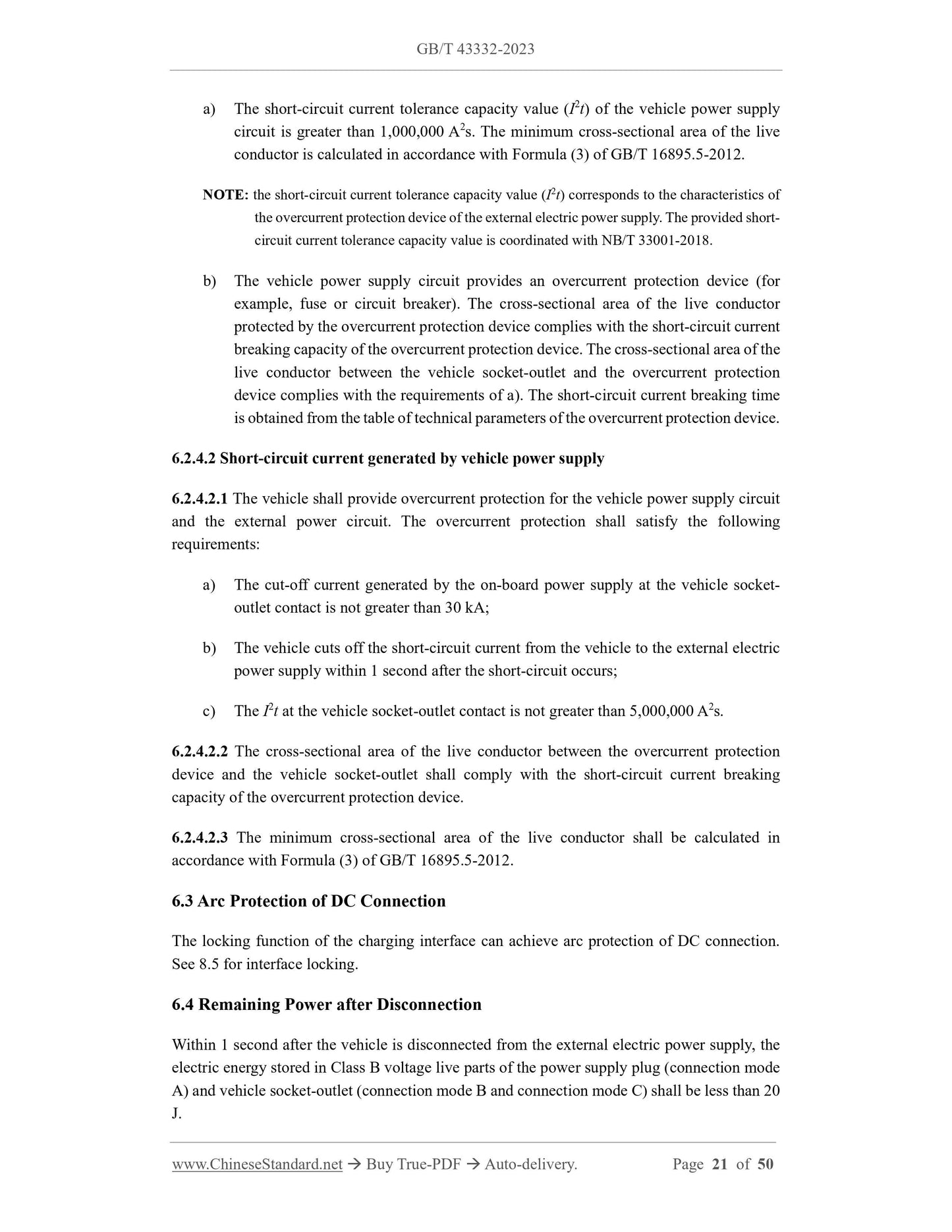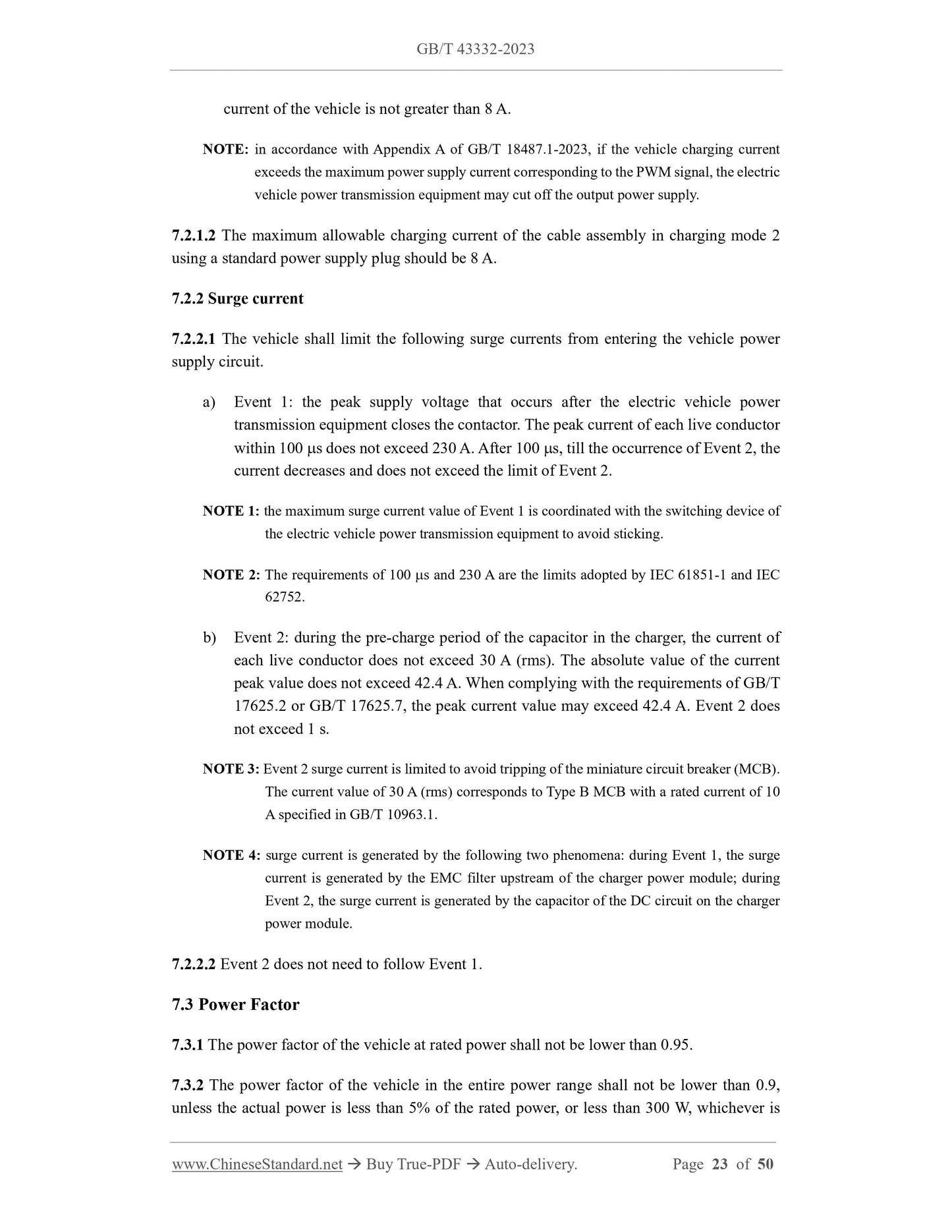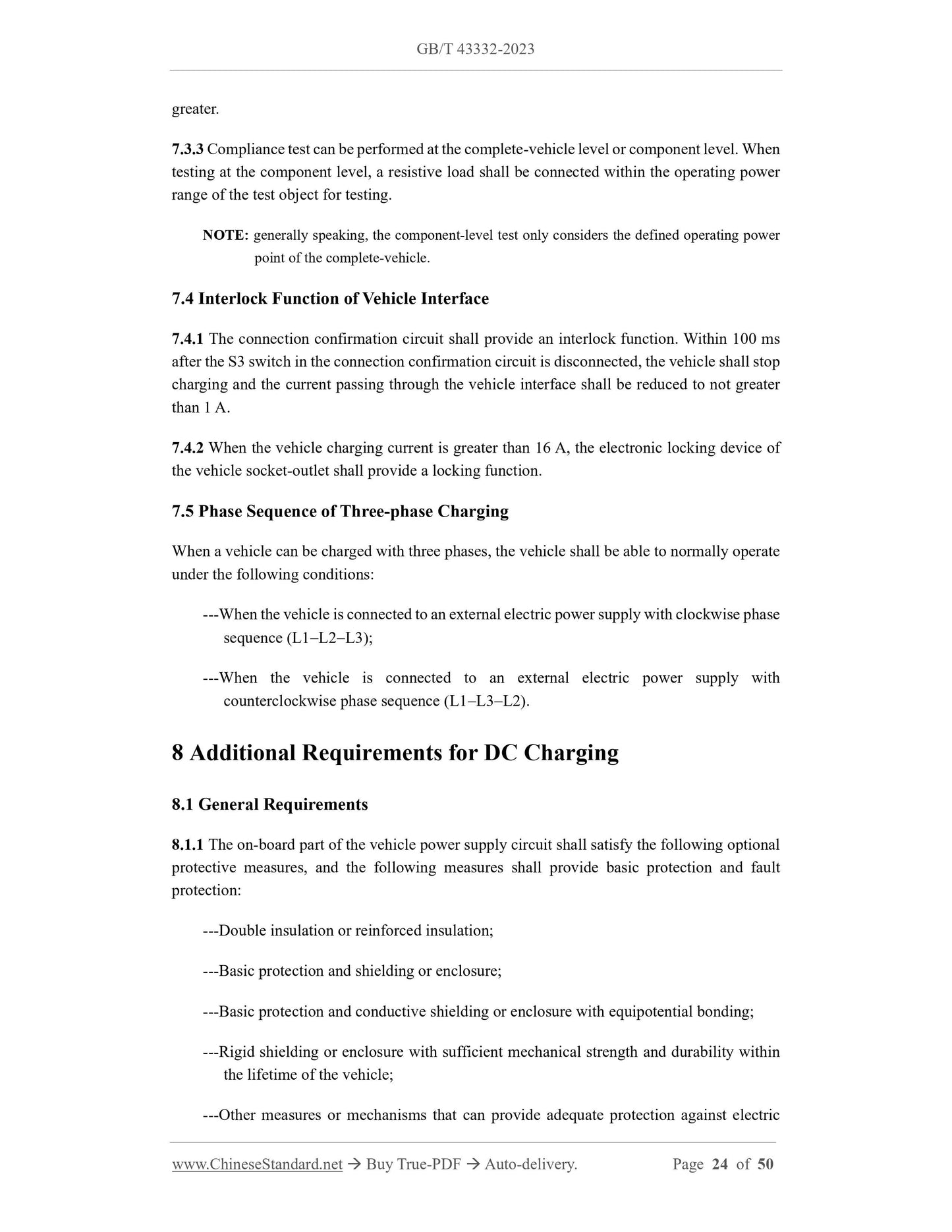1
/
of
12
www.ChineseStandard.us -- Field Test Asia Pte. Ltd.
GB/T 43332-2023 English PDF (GB/T43332-2023)
GB/T 43332-2023 English PDF (GB/T43332-2023)
Regular price
$560.00
Regular price
Sale price
$560.00
Unit price
/
per
Shipping calculated at checkout.
Couldn't load pickup availability
GB/T 43332-2023: Safety requirements of conductive charging and discharging for electric vehicles
Delivery: 9 seconds. Download (and Email) true-PDF + Invoice.Get Quotation: Click GB/T 43332-2023 (Self-service in 1-minute)
Newer / historical versions: GB/T 43332-2023
Preview True-PDF
Scope
This document specifies the safety requirements for conductive charging and discharging ofelectric vehicles (hereinafter referred to as “vehicles”) when they are conductively connected
to an external electric power supply or external load.
Basic Data
| Standard ID | GB/T 43332-2023 (GB/T43332-2023) |
| Description (Translated English) | Safety requirements of conductive charging and discharging for electric vehicles |
| Sector / Industry | National Standard (Recommended) |
| Classification of Chinese Standard | T40 |
| Classification of International Standard | 43.020 |
| Word Count Estimation | 36,397 |
| Date of Issue | 2023-11-27 |
| Date of Implementation | 2023-11-27 |
| Issuing agency(ies) | State Administration for Market Regulation, China National Standardization Administration |
Share
